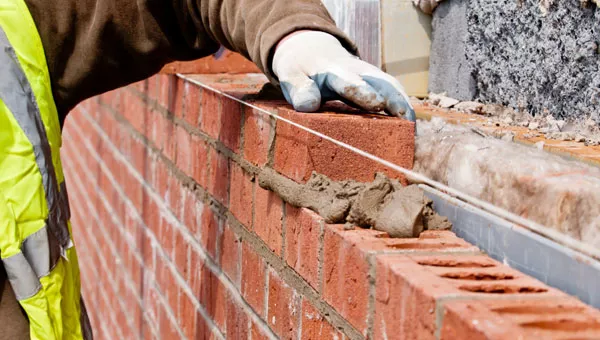Unlocking the Tricks of Sustainable Stonework Building And Construction Practices for Eco-Friendly Structures
Amongst the myriad techniques to eco-friendly building, lasting masonry building and construction stands out as a time-tested and durable approach that holds a wealth of untapped capacity. From the selection of products to innovative construction strategies, the keys to attaining sustainability within stonework construction are multifaceted and intriguing.
Advantages of Lasting Stonework Building And Construction
Embracing sustainable stonework building and construction methods not just decreases environmental impact yet also provides long-lasting financial benefits to contractors and communities. By using products like recycled bricks, blocks, and stones, builders can considerably lower the carbon impact of their projects while promoting source efficiency. Additionally, sustainable masonry building and construction techniques, such as appropriate insulation and thermal mass buildings, can improve energy effectiveness within structures, bring about lowered operational costs over time.
In addition, the toughness and durability of masonry structures contribute to long-lasting economic advantages. Structures created utilizing lasting masonry practices commonly require less repair and maintenance, equating to set you back financial savings for contractors and residential or commercial property owners. The durability of stonework materials likewise ensures that structures stay stable and safe and secure, minimizing the need for frequent renovations or substitutes.
Eco-Friendly Masonry Materials
Making use of eco-friendly masonry materials is a crucial action towards improving the sustainability of construction methods and decreasing environmental impact while optimizing lasting financial advantages. Sustainable masonry products are sourced, created, and used in a way that reduces general ecological impact. Lasting concrete blocks include recycled accumulations and might feature improved insulation residential or commercial properties, adding to energy effectiveness in structures.
Furthermore, natural products like adobe, rammed earth, and straw bales give excellent thermal mass residential or commercial properties, reducing the requirement for heating and cooling down power. These materials are commonly in your area readily available, advertising regional economic situations and minimizing transportation-related carbon emissions. By picking environment-friendly stonework products, building jobs can significantly minimize their environmental impact and add to the creation of healthier, much more lasting developed settings.
Energy-Efficient Masonry Methods
Energy effectiveness plays a critical function in improving the sustainability of stonework construction techniques. By applying energy-efficient masonry methods, contractors can substantially reduce the overall energy usage of a building, causing reduced functional costs and a smaller sized ecological footprint. One crucial energy-efficient masonry strategy is using thermal mass, which involves integrating thick products like concrete or block right into the building's framework to soak up and save heat. This helps manage interior temperatures, reducing the demand for mechanical home heating and cooling systems.

Innovations in Lasting Masonry
Recent improvements in sustainable masonry techniques have actually caused cutting-edge methods that are improving the building industry. One such development is the development of self-healing concrete, which utilizes bacteria embedded within the concrete to heal fractures autonomously. This breakthrough not only decreases upkeep prices however also improves the toughness of stonework frameworks, contributing to their sustainability.
Another noteworthy technology is using recycled aggregates in masonry building and construction - masonry contractor. By including products such as smashed ceramic waste more helpful hints or recycled glass into concrete blends, contractors can lower the ecological effect of building tasks while preserving structural integrity. This method not just draws away waste from land fills but also conserves natural deposits, making it a key development in sustainable masonry building
Moreover, the combination of digital style devices, such as Building Info Modeling (BIM), is reinventing the means stonework structures are intended and constructed. BIM permits for more exact calculations, decreased product wastage, page and improved power efficiency, eventually resulting in even more sustainable building practices. These technologies jointly represent a promising future for lasting stonework building in the period of eco-friendly structures.
Future Trends in Stonework Sustainability
With the cutting-edge strides made in lasting stonework techniques, the future fads in stonework sustainability are poised to more change the building and construction market. One of the essential trends shaping the future of masonry sustainability is the increased combination of innovation. Improvements such as Building Details Modeling (BIM) and digital reality simulations are being utilized to optimize stonework building procedures, leading to decreased product waste and boosted energy effectiveness in structures.
Furthermore, the growth of unique lasting materials is established to play a substantial function in enhancing the eco-friendliness of masonry building. masonry contractor. Innovations like self-healing concrete, recycled aggregates, and bio-based binders are getting traction for their capability to minimize environmental influence while keeping architectural integrity

Final Thought
In verdict, sustainable stonework building techniques use many benefits for eco-friendly buildings. masonry contractor. Innovations in sustainable stonework are continuously being developed to better enhance the environmental efficiency of structures.